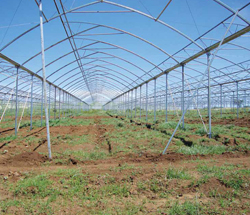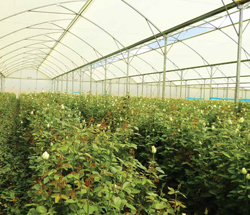 One in five growers say they’re thinking of just leaving their greenhouse completely empty this winter, according to a survey conducted by the Dutch sector organisations Glastuinbouw Nederland and Plantum. Skipping a crop or starting later obviously has serious financial consequences. What many growers don’t realise, however, is that ‘just’ switching off their systems can also have consequences. Next time the pumps, pipes and drippers are put to work, there’s a risk that they could malfunction. A few tips can help to prevent an extra financial damper due to unexpected repair costs.
One in five growers say they’re thinking of just leaving their greenhouse completely empty this winter, according to a survey conducted by the Dutch sector organisations Glastuinbouw Nederland and Plantum. Skipping a crop or starting later obviously has serious financial consequences. What many growers don’t realise, however, is that ‘just’ switching off their systems can also have consequences. Next time the pumps, pipes and drippers are put to work, there’s a risk that they could malfunction. A few tips can help to prevent an extra financial damper due to unexpected repair costs.
If a pump system lies idle for several months, this can have unfortunate consequences. In the normal circulation process, no sediment collects at the bottom of the pump or in the pipes. This is not the case if the system is shut down: the sediment becomes encrusted and when the pump is finally switched on, these hard chunks can cause blockage. The risk of accumulated sediment is slightly lower in pumps used for irrigation purposes, because they work with clean water.
Corrosion is another threat, although it depends on the water quality. It can result in the impeller becoming stuck to the pump body. And the seals that form the barrier between the wet and dry parts can also stick together. If the two seal faces that make contact aren’t moved at all for a prolonged period, it will ultimately be impossible to separate them. \
Beware of frozen pipes
Without heating in the greenhouse, there’s a very real risk of frozen pipes. When the water remaining in the pipes freezes, it expands. The pipes directly next to the exterior walls are the most likely to be damaged in the event of frost, possibly resulting in many metres of burst pipes. This risk is particularly great in older greenhouses with less insulation. The frost doesn’t even need to be very severe: just a couple of nights at minus two or three can be enough to cause damage.
 High repair costs and consequential damage to the crop
High repair costs and consequential damage to the crop
Van der Ende Groep warns growers about the high repair costs that damage can involve. To remove sediment, the pump will have to be opened up and repaired.
If the pump body has cracked due to freezing, the repair costs can even be so high that it makes more financial sense to simply buy a whole new pump.
We also know from experience that growers usually only discover that something isn’t working when the new crop has already been planted in the greenhouse. Then it’s a matter of making urgent repairs to limit consequential damage to the crop.
Prevention is better than repair
We suggest that you take preventive measures in order to avoid problems at a later stage. A few simple tips can make all the difference:
- Switch irrigations systems on for a few minutes every week, creating demand for a short time and flushing out the pipes.
- Don’t switch the heating boiler off completely, and instead leave the pump running at low speed.
- Carefully monitor the climate computer in terms of the greenhouse and water temperature during a low temperature, so that you can turn up the heating in good time and protect the greenhouse from freezing.
- If submersible pump systems for drainage or sewage, for example, are shut down for a long time, they should be switched on for two or three seconds every week. This not only lets water flow through the system but also keeps corrosion down to a minimum.
- Run the pumps of the substrate system for a couple of minutes once every week or two weeks, to keep the flushing function intact.


